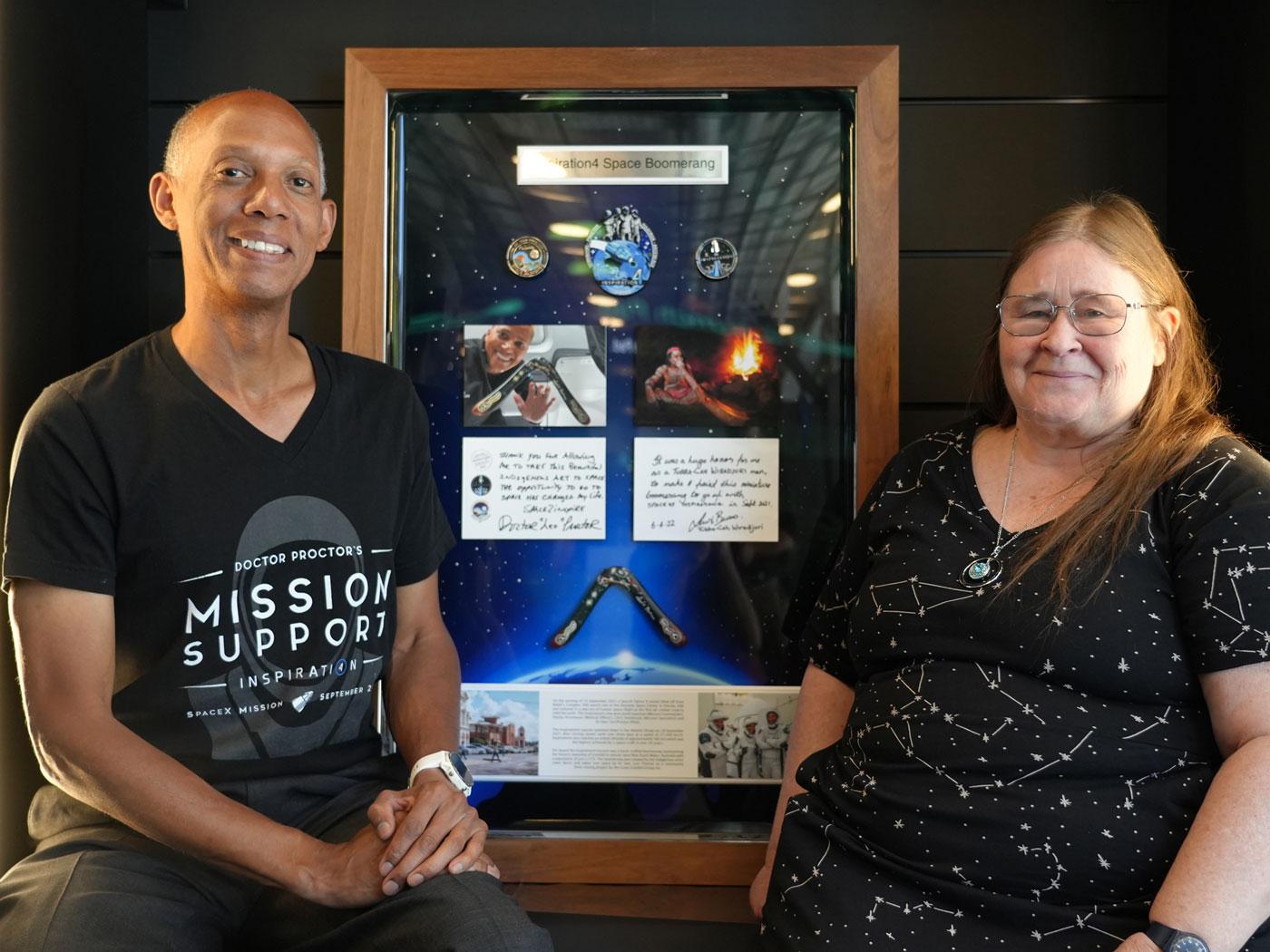Starting today, a handcrafted boomerang that went to space will be on display at the Australian Space Discovery Centre.
The boomerang was created by renowned Indigenous artist Lewis Burns, a Talbragar-Wiradjuri man from Dubbo, NSW.
The artwork on the boomerang reflects his depiction of “Dreamtime Corroboree” – an illustration of a spiritual bond between the people and the ecosystems on Earth. It was onboard the Inspiration4 mission – the first all-civilian mission to orbit the Earth – and was showcased by US astronaut, Dr Sian Proctor (image above).
"When my sister was going into space, I wanted her to bring a boomerang from Australia. I want to thank Lewis for what he did, and what he created. It’s beautiful, I love it, and my sister was so happy about it having it travel the world 48 times in the three days they were in space," said Langley Proctor, Dr Sian Proctor’s brother.

Space traditions
"Astronauts carrying small items into space that have personal or symbolic meaning is a tradition that goes right back to the beginning of human spaceflight," points out Kerry Dougherty OAM, the Australian Space Agency’s space historian.
Some of the other instances include:
- Yuri Gagarin, the first person in space, carried a small doll that belonged to one of his daughters to use as a “zero gravity indicator”: when the doll floated free, Gagarin (who was strapped into his seat) knew that he was now in weightless conditions.
- South Australia’s own Andy Thomas carried several symbolic items on his first spaceflight, including a piece of Cook’s ship Endeavour, a boomerang, and the pilot ‘wings’ worn by Ross and Keith Smith (who carried out the first flight from England to Australia in 2019).
- Andy Thomas’ wife, Dr Shannon Walker, also an astronaut, carried a modern boomerang created by Kaurna man, Jack Buckskin, which was commissioned by the SA Museum as an expression of modern Aboriginal culture and ingenuity. Dr Walker also took a toy kangaroo named Purra to space, which was provided by the Australian Space Agency and is named after an Indigenous constellation.

Australian Space Discovery Centre
Explore the latest innovations in space technologies, through a range of interactive exhibits and displays.



